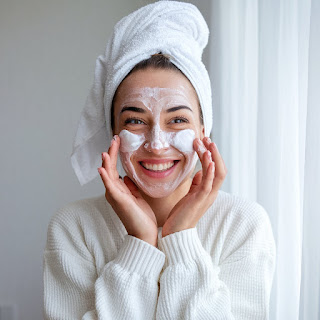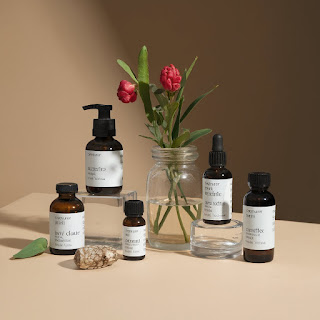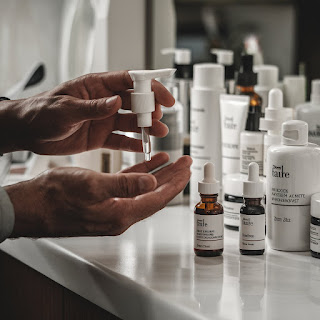As a busy mom, your schedule is packed from the moment you wake up to the time you finally get some rest at night. Between taking care of your kids, managing household chores, and maybe juggling work, it can be tough to carve out time for yourself—let alone a detailed skincare routine. But here’s the good news: keeping your skin healthy and glowing doesn’t have to be complicated or time-consuming. With a few simple tips and the right products, you can maintain a great skincare routine that fits into your busy life without compromising results.
Why Skincare Matters (Even When You’re Busy)
Your skin is the largest organ of your body and deserves care just like any other part of you. Stress, lack of sleep, and a busy schedule can all take a toll on your skin, leading to issues like dullness, breakouts, and signs of aging. But with the right, easy-to-follow skincare routine, you can still achieve healthy, radiant skin—even on the busiest of days.
Skincare Tips for Busy Moms
Here’s how you can streamline your skincare routine and keep it effective:
1. Stick to the Basics: Cleanse, Moisturize, Protect
Rather than worrying about a 10-step routine, focus on three essential steps: **cleansing**, **moisturizing**, and **protecting**.
- Cleanser: Use a gentle cleanser to wash away dirt, oil, and makeup at the end of the day. You can skip double cleansing unless you’ve worn heavy makeup or sunscreen. A quick cleanse in the morning is enough to refresh your skin.
- Moisturizer: Choose a lightweight yet hydrating moisturizer to keep your skin smooth and supple. Opt for a product that contains both hydrating ingredients (like hyaluronic acid) and skin barrier-strengthening components (like ceramides).
- SPF: No matter how short your routine is, don’t skip sunscreen. A broad-spectrum SPF of at least 30 should be applied every morning, even if you’re indoors most of the day. Try a moisturizer with built-in SPF to save time.
2. Multitasking Products are Your Friend
As a busy mom, time is precious. To save time without sacrificing results, look for products that serve more than one purpose:
- Tinted Moisturizer with SPF: Instead of applying separate sunscreen, moisturizer, and foundation, a tinted moisturizer with SPF combines all three, giving your skin protection and a bit of coverage in one step.
- Serums with Multiple Benefits: If you want to target skin concerns like fine lines, dark spots, or dullness, look for serums that do double duty. For instance, a serum with both vitamin C and hyaluronic acid can brighten and hydrate your skin at the same time.
3. Nighttime Routine: Keep It Simple
Your nighttime routine is where you can give your skin some extra TLC, but that doesn’t mean you need a complicated regimen. Here’s a simplified version:
- Cleanse: As mentioned, a gentle cleanser is key. If you don’t have time for a full wash, consider using micellar water or a cleansing wipe to remove makeup and impurities.
- Treatment: If you’re dealing with specific skin issues (like wrinkles or acne), this is when you can apply a treatment serum. But you don’t need to use multiple treatments every night. Pick one or two that address your top concerns, like a retinol for anti-aging or a niacinamide serum for blemishes.
- Moisturize: A rich, hydrating night cream can work wonders overnight, helping your skin repair and stay nourished while you sleep.
4. Hydration is Key
No matter how busy you are, keeping your skin hydrated is one of the best ways to maintain a youthful glow. Drink plenty of water throughout the day, and use products that help lock in moisture. Look for ingredients like glycerin, hyaluronic acid, and squalane, which draw moisture into your skin and help prevent dryness.
5. Don’t Neglect Your Eyes
The skin around your eyes is delicate and can show signs of fatigue quickly. As a busy mom, you might experience puffiness, dark circles, or fine lines. To combat this:
- Use an eye cream or gel with caffeine to reduce puffiness.
- Look for eye creams that contain peptides or hyaluronic acid to help with hydration and fine lines.
- If you’re short on time, try using cooling eye patches in the morning to refresh tired eyes quickly.
6. Self-Care Moments
Even with a busy schedule, it’s important to take a few minutes each day for yourself. Consider making your skincare routine a mini self-care ritual. Applying a soothing face mask or massaging your face with a jade roller can help you relax and recharge, even if it’s just for five minutes.
Quick Morning Skincare Routine (3 Steps)
1. Cleanse: Use a mild cleanser to remove any excess oil from the night.
2. Moisturize: Apply a lightweight moisturizer that suits your skin type.
3. SPF: Never skip sunscreen! Use a broad-spectrum SPF 30 or higher.
Quick Nighttime Skincare Routine (3 Steps)
1. Cleanse: Remove makeup and dirt with a gentle cleanser or micellar water.
2. Treatment: Apply a serum that targets your main concern, like a retinol or brightening serum.
3. Moisturize: Seal in hydration with a rich night cream or oil.
Conclusion
Being a mom doesn’t mean you have to put your skincare on the back burner. With just a few essential steps and multitasking products, you can simplify your skincare routine and still achieve glowing, healthy skin. Remember, the goal isn’t to have the most elaborate routine, but to find what works for you and your lifestyle.
Taking a few moments each day for your skin can help you feel refreshed and confident, even on the busiest days. If you need help choosing the right products for your skin type, feel free to reach out to us at Dr. Rizwan’s Skin Cosmetic and Laser Clinic for personalized recommendations. After all, a happy mom deserves happy, healthy skin!






.jpeg)

.jpeg)











.jpeg)















.jpeg)